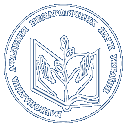- Annuš, Norbert (orcid.org/0000-0002-8535-2042) and Takáč, Ondrej (orcid.org/0000-0001-8836-0227) (2023) Teaching of interpolation and approximation curves through computer simulation Information Technologies and Learning Tools, 5 (97). pp. 55-72. ISSN 2076-8184
|
Text
Норберт Аннуш.pdf - Published Version Download (1MB) |
Abstract
The use of digital tools in the education process has become a matter of course. This is particularly true in computer science lessons. Our study assesses the performance of students in higher education within each subject area of computer graphics. Computer graphics and its education are very versatile. A better understanding of the algorithms that perform the graphical adjustments is much easier if the student is not only theoretically familiar with the field and its procedures but also has the opportunity to try them out. Our aim was to develop a teaching tool that would allow students attending a graphics class to learn about and test the possibilities of interpolation and approximation curves. In our study, we focused on three specific types of curves: the Hermite, Bézier and Coons curves. For universal use, students are able to simulate the curves concerned in nth-degree cases. In the development, we focused on modelling the mathematical formulas describing the curves trying to design an easy-to-use teaching tool. In this case, the teaching tool is a computer software designed for this purpose. In our research, we conducted qualitative surveys on small groups of students. Our study was conducted on control groups. We also conducted interviews with students using the software to assess the strengths and weaknesses of our software. Based on this feedback, we optimized our software and set the direction for future improvements. The practical application suggests that the educational software has a positive impact on students' learning outcomes. This paper describes the mathematical models describing the processed curves. It then presents the application's options and graphical results. Finally, we would like to present the results of the student testing and their feedback on the educational software.
Downloads
Downloads per month over past year
Actions (login required)
 |
View Item |




